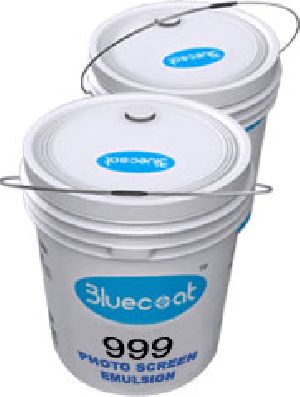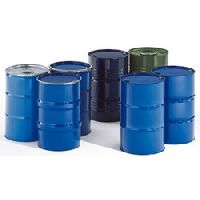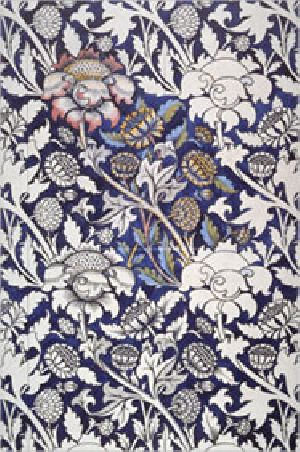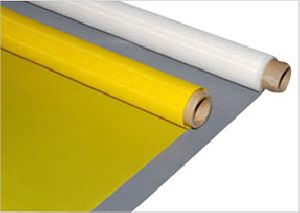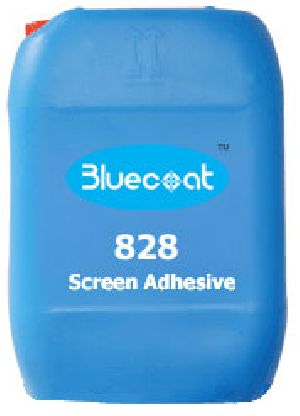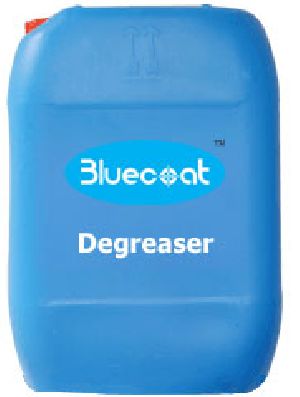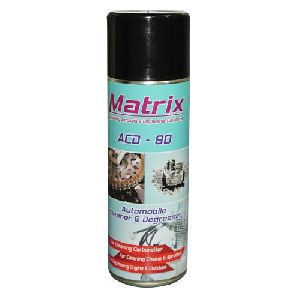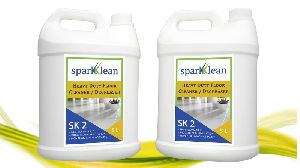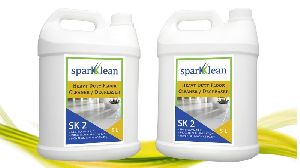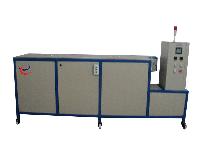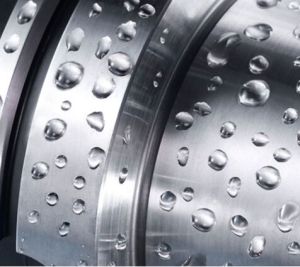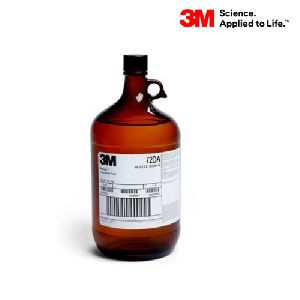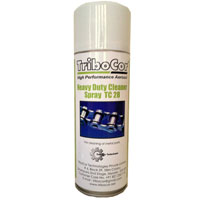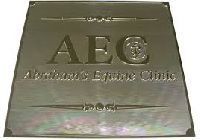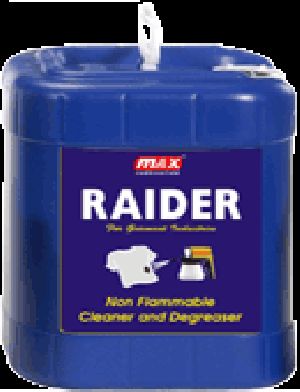Bluecoat - 999 Photo Screen Emulsion Under the Direct Emulsion Technique of stencil preparation Bluecoat is coated into the screens and within no time screen is ready for printing and this replaces the traditional time consuming and irritating methods of preparing the screens. Our Bluecoat PHOTO EMULSION is manufactured under standard conditions and under strict quality control. Procedure Cleaning the Screen Proper fabric treatment and adequate degreasing are very important for good result. Therefore, wash the screen with clean water and dry it. Mixing Take 1 kg of Bluecoat emulsion in a clean vessel. Also take a glass of distilled water sufficient to mix 5 to 7 grams of Ammonium Bi-chromate and stir the solution till it is completely dissolved. Mix this solution of Ammonium Bi-chromate with the Bluecoat solution of 1 kg. and stir until the colour of the solution is changed to light uniform green. Viscosity of the emulsion can be adjusted with distilled water Filter the emulsion with bolting cloth and close the container at least for 1/2 hour so that all the air-bubbles are disappeared. Processing and Coating Techniques It is always desirable that light in the Photography department is subdued light and if possible, yellow light. Direct emulsion coating requires skill to produce uniform pinhole free stencils. Important factors are the fabric mesh number, thread diameter, colour of the fabric the tension and the solid contents, the thickness of the coating blade, angle and speed of the coating blade across the screens etc. If you change the supplier of the bolting cloth, check and see that you are receiving the same type of material as before. Thus it is very important that print quality is dependent upon the correct coating technique. If the coating is made to the satisfaction then one coating is sufficient from outside otherwise repeat the procedure. Drying After the coating is over, it is important to thoroughly dry the coated screen before it is exposed otherwise stencil quality will be poor. Moisture remain present in the coated screen even when the screen feels dry to touch if you are coating the screen for second time. It is important that the first coat be thoroughly dry before the second coat is applied. Dry the coated screens in horizontal position at room temperature with fans, to get best result and sharpness. Exposure Exposing is one of the most important factors in achieving fine image and sharpness and maximum mechanical screen resistance. The only way of achieving the correct exposing is through adjusting exposing time using fixed factors such as no of tube light, the quality of the light, set distance and set coating techniques and accordingly photography time is adjusted. Time of photography varies between 30 seconds to 120 seconds under standard conditions. Washing Immediately after the exposure of screen wash the screen. With gentle spray of water from the squeeze side i.e. inside until the image comes up if required use rubber foam gently. Blocking out and touch up The most common method is to use the excess emulsion for filling the entire screen with a piece of cardboard it touching is required use the same material. Drying with sensitizer After the screen is washed out. dry the screen and apply Brasso Hardener / liquid solution of ammonium bi-chromate with sponge. Before sending it to printing department, wash the screen with a sprayer to remove the excess Brasso Hardener / ammonium bi-chromate. Your screen is ready for printing. Advantages Time Saving Considerable time is saved in preparing one complete screen with Bluecoat photo emulsion. The screen is ready to use within 30 to 45 minutes depending upon the repeat and urgency which otherwise take on day with lacquer. Cheaper Cost wise Bluecoat emulsion is cheaper than the traditional lacquer which is very costly. No Disruption Printing program is not disturbed if screen is torn out on the table or machine. With Bluecoat emulsion, Screens can be prepared immediately. Cleanliness Cleanliness in the photography department and avoidance of bad smell is possible with the use of Bluecoat photo emulsion. Storage Keep the container closed & away from sunlight. Shelf Life 12 months, if container is properly closed. Packing 10 Kgs. Bucket Packing. We recommend that before using our product in full scale production, the customer should make his own tests to determine the suitability of the product for his own purpose under his own operating conditions. Since the circumstances under which our product is stored, handled & used, are beyond our control, we cannot assume any responsibility of their use by the customer.
